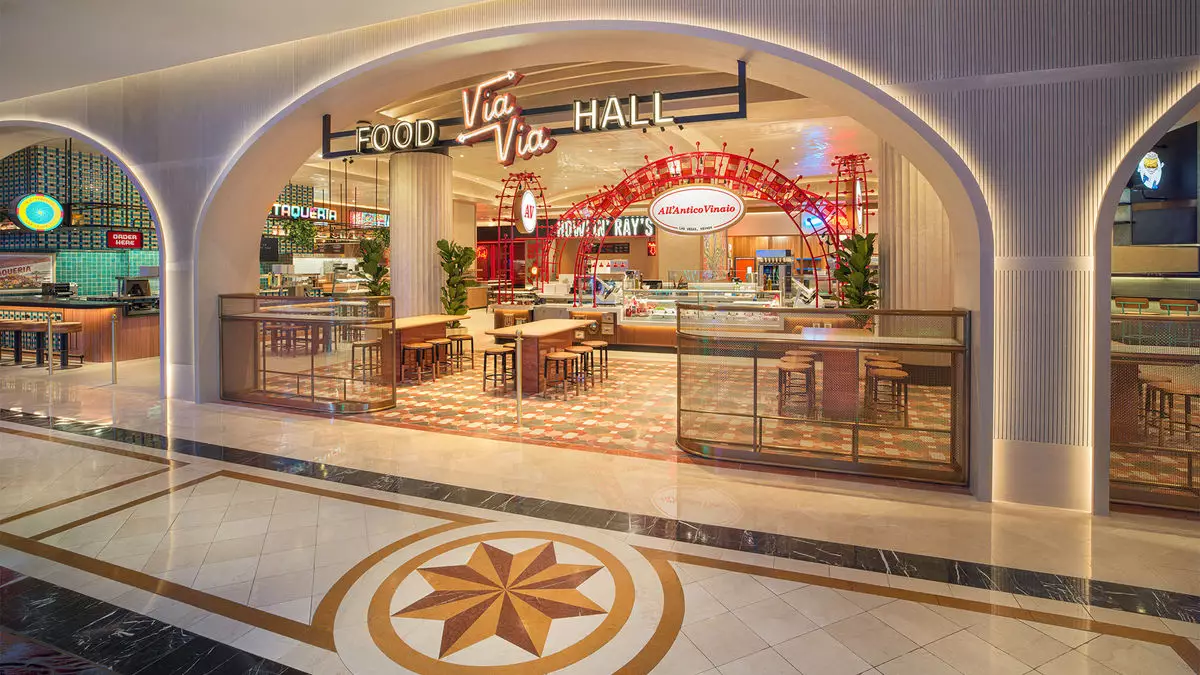For nearly two decades, the Venetian Resort Las Vegas carried a peculiar secret: vast swathes of premium real estate atop its South Tower sat unused, concealed behind blank windows where concrete shells remained untouched since the resort’s 2004 opening. This dormant inventory comprised close to 80,000 square feet alone, part of nearly 500,000 square feet of “gray space” that represented unrealized opportunity in one of the world’s most competitive hospitality markets. While such a vast amount of prime property falling into disuse might seem astonishing, that was precisely the challenge the Venetian inherited—a scenario that reveals how inertia can extinguish even the most obvious avenues for growth.
The turning point came after the property’s 2022 acquisition by Apollo Global Management and VICI Properties for $6.25 billion. This lucrative deal sparked a fresh mindset and a bold reinvestment strategy spearheaded by the new CEO, Patrick Nichols, who assumed leadership shortly after the sale. Nichols confronted the paralysis that had impeded prior owners: a plethora of possibilities had stalled meaningful progress. His team’s decisive pivot turned the grey void into a curated collection of experiential suites and amenities designed to appeal to the modern luxury traveler and group event market.
From Concrete Shells to Penthouse Paradises
Instead of defaulting to conventional hotel rooms, the Venetian’s transformation redefined what high-end accommodations on the Strip could embody. The 78 new suites at the tower’s summit were crafted as multi-bedroom, lavish retreats ideal for group celebrations—birthdays, bachelor parties, or milestone events where space and privacy are paramount. This decision was a savvy acknowledgment of customer feedback seeking versatile “party pads” where revelers could celebrate unabashedly without fear of disturbing others or risking damage fees.
This shift also reflects a broader industry trend emphasizing experiential travel over mere accommodation. Guests want venues that foster interaction and immersive celebrations, and the Venetian’s new “penthouse-caliber” offerings respond directly to that desire, elevating the resort’s appeal beyond standard lodging. Importantly, this innovation did not come at the cost of the property’s iconic Italianate charm; renovations preserved the spirit and craftsmanship intrinsic to its identity, while incorporating contemporary comforts and aesthetics.
The Culinary Expansion: More Than Just Dining
Parallel to the accommodation overhaul, the Venetian launched an aggressive expansion of its culinary portfolio, now boasting over 40 restaurants—a claim to being the largest dining collection within any comparable Las Vegas resort-gaming complex. Rather than random additions, the strategy integrated acclaimed culinary brands with proven reputations across the country, such as Gjelina from Venice Beach and HaSalon from New York, creating a narrative of eclectic yet curated tastes.
The new Via Via food hall exemplifies this strategy. It assembles quick-service concepts like Scarr’s Pizza, Ivan Ramen, and B.S. Taqueria, reflecting the growing demand for high-quality, accessible dining options that cater to both casual visitors and busy convention attendees. This approach manifests a deep understanding that food is not a mere amenity but a central pillar in trip planning and guest retention.
Still to come are marquee dining experiences, including the Michelin-starred Korean barbecue Cote and Bazaar Meat from celebrated chef Jose Andres. These forthcoming additions symbolize the Venetian’s commitment not just to quantity but exceptional quality and celebrity pedigree, positioning the resort as a culinary destination in its own right.
Entertainment and Technology: Elevating the Guest Journey
Beyond spaces and sustenance, the renovation effort has revitalized entertainment venues and convention facilities, both critical in lengthening guest stays. Voltaire, a new 1,000-seat cabaret theater, offers intimacy alongside star power, with headline performers like Kylie Minogue and Christina Aguilera. This blend of exclusivity within a historically grand setting marks a shift from the sprawling, impersonal venues of the past, focusing instead on creating memorable, engaging moments that resonate.
Technologically, upgrades to the convention center reflect an acute awareness of evolving customer expectations and operational efficiency. Digitally enhanced meeting rooms and cutting-edge lighting ensure the space aligns with modern business needs, maintaining the Venetian’s competitiveness within the lucrative convention segment, which reportedly contributes to about a third of its visitation.
A Strategic Battle for Guest Attention
At its core, the Venetian’s sweeping transformation is a chess match for time—specifically, guest time. In the fragmented attention economy of Las Vegas, where multiple mega-resorts aggressively vie for consumer dollars and hours, the old model of mere presence is insufficient. Patrick Nichols’ vision targets prolonged engagement through diverse, cohesive experiences tailored to modern desires for celebration, dining, entertainment, and business.
No longer content to let valuable real estate languish or to present outdated offerings, the Venetian delivers a bold, integrated destination that invites guests to linger. It embraces calculated risks in repurposing dormant assets, uniting heritage with innovation, and recognizing that in today’s climate, capturing the imagination and loyalty of guests requires more than scale—it demands inspired reinvention.


Leave a Reply